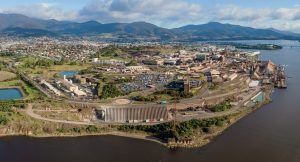
IFA 2025 Annual Conference report
Selected highlights of the International Fertilizer Association’s Annual Conference in Monaco in mid-May.

Selected highlights of the International Fertilizer Association’s Annual Conference in Monaco in mid-May.

President Donald Trump delayed his ‘liberation day” tariffs by three months on 9th April, while simultaneously ramping up levies on China.

President Donald Trump delayed his ‘liberation day” tariffs by three months on 9th April, while simultaneously ramping up levies on China. In this latest twist to the on-off US tariffs saga, the Trump administration’s 90-day pause on additional duties should provide international suppliers to the world’s biggest fertilizer market with some respite – for now. With the exception of China, the US will now cut back its so-called ‘reciprocal tariffs’ to 10% for the duration of a three-month suspension period. The European Union’s tariff is now halved to 10%, for example, with the trade bloc also pausing its trade countermeasures against the US.

While the US tariff situation remains subject to considerable uncertainty, there has already been an impact on short term trade flows, as well as investment decisions.

The Sulphur Institute (TSI) held its World Sulphur Symposium in Florence from April 8th-10th.

The US Chemical Safety and Hazard Investigation Board (CSB) has released a second update on its ongoing investigation into the fatal hydrogen sulphide release that occurred on October 10, 2024, at the PEMEX Deer Park Refinery in Deer Park, Texas. Two contract workers died during the incident, and over 13 tonnes of hydrogen sulphide gas were released. Local authorities issued shelter-in-place orders lasting several hours for the neighbouring cities of Deer Park and Pasadena.

Verdant Minerals says it has been granted two key productive mineral leases for its Ammaroo Phosphate Project by the Northern Territory government. The company says that this significant milestone advances one of the world's largest undeveloped phosphate resources, located about 220km southeast of Tennant Creek. Acting Chief Minister and Minister for Mining and Energy, Gerard Maley, stated, “This is a significant milestone in progressing a world-class resource project that will support jobs, drive investment, and strengthen the NT’s position as a leader in resource development.”

The Philippine government is looking to follow Indonesia’s success in attracting downstream investment by banning the export of nickel ore. The Philippine Congress could ratify a bill banning raw mineral exports as early as June. The ban would come into force five years after approval to give miners time to build downstream processing plants. This development could potentially lead to higher nickel prices in the medium term if there is a delay to building domestic capacity and the Indonesian government becomes serious about restraining ore availability.

CRU’s World Copper Conference was run at the start of April 2025 in Santiago, Chile, with the industry facing a crossroads. The Americas account for nearly half of the world’s mined copper, with South America producing 38% and North America contributing 10%. However, North American copper mines face cash costs 51% above the global average and 79% higher than those of their South American neighbours, positioning the region as one of the most expensive copper-producing areas globally. These high costs create a significant challenge, especially as securing a reliable copper supply has emerged as a geopolitical priority.

Indonesia is increasing the royalty rates that the government takes on metals mined within the country. The Indonesian government has proposed a tiered royalty structure on nickel ore sales, ranging between 14–19%, depending on the prevailing nickel price. This would replace the current flat rate of 10%. A 14% rate would apply when nickel prices are below $18,000 /t, increasing progressively to 19% for LME prices above $31,000 /t. The royalty is calculated based on revenue from nickel ore sales.